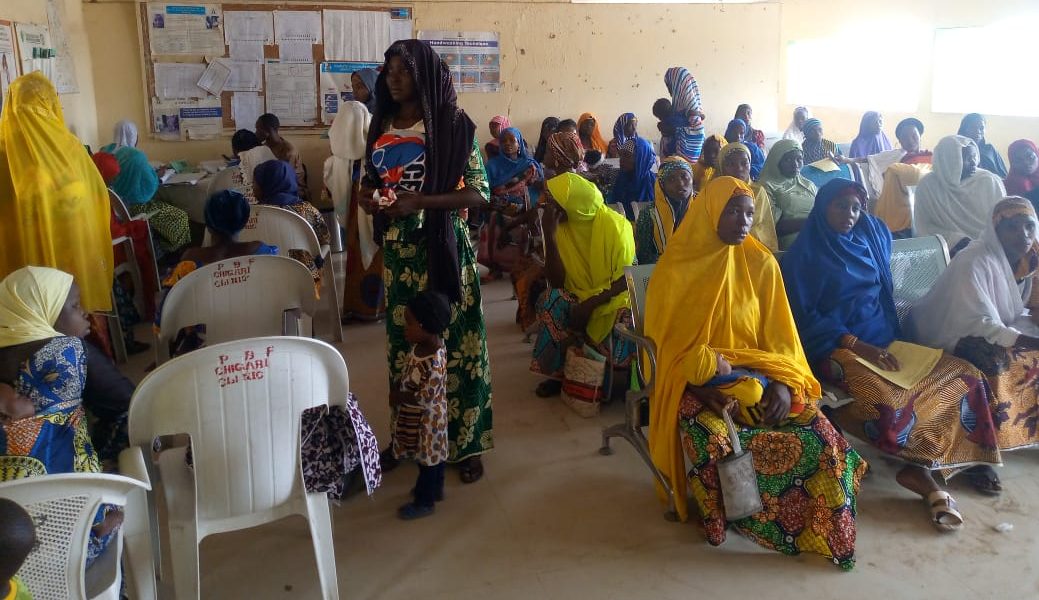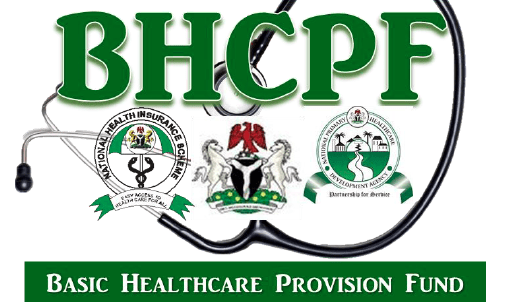
SPECIAL REPORT: Health Centres In North-East Nigeria In Deplorable State Despite Buhari’s Promise
- Health SectorInfrastructure
- No Comment
- 556
When 39 weeks pregnant Aisha Usman got ill and needed to be rushed to a clinic one Tuesday night in March, her husband was bewildered and did not know what to do. The clinic is located about 15 kilometres away from their home in Gombe state, northeastern Nigeria, and they had no vehicle for transportation.
Mrs Usman endured the pain through the night and was rushed to Gombe’s Gujuba Primary Healthcare Centre (PHC) in the morning. When they arrived, her husband, Mr Usman, could not wait to hand her over to the health workers to check what was wrong.
“But to my greatest surprise no doctor was on duty to attend to her,” Mr Usman said. “We waited for about an hour before the health official arrived.”
At another time, three people were shot in a communal clash in Bauchi State. Police officials rushed the victims to Dajin PHC for medical attention but they were forced to wait since the “only health officer present was attending to another emergency.”
This is the experience at most primary health centres in Nigeria where a shortage of staff threatens public health services. For years, the country has failed to revitalise its health sector despite federal and state government promises, investigations by PREMIUM TIMES have found.
It was revealed that PHC facilities in the country cannot provide essential healthcare services. The hospitals face problems including shortage of staff, poor water supply, poor power supply, inadequate equipment and poor distribution of health workers.
Despite the obvious decay in the healthcare system in Nigeria, the government has barely done enough over the years and the situation has not improved, especially concerning effective funding and staff strength.
‘Failed Revitalization plan’
In January 2017, President Muhammadu Buhari flagged off a scheme to revitalise 10 thousand PHCs across the country. The president said the objective was to avail poor Nigerians of qualitative and affordable health services. He promised that the scheme would make at least one PHC fully functional in each of the wards across the country.
In the first phase of the project, the federal government in collaboration with the sub-national government and development partners said it will work on a PHC in each of the country’s 109 senatorial districts in Nigeria.
PREMIUM TIMES selected and visited three PHCs in the country’s northeast; the PHC in Dajin, southern Bauchi; Chigari, Adamawa central; and Gujuba, Gombe south senatorial district to check the level of work implemented following the revitalisation promise. The three PHCs are among the 109 the president promised to revitalise in the first phase of the project.
We found that despite the huge resources (N550 million) invested into the scheme by the federal government, the programme has failed to achieve the desired objectives.
The Executive Secretary of NPHCDA, Faisal Shuaib, did not respond to calls placed to have him comment on this report, nor did the agency’s public relations officer, Mohammad Ohitoto.
Minimum requirement of staff
The blueprint of the National Primary HealthCare Development Agency (NPHCDA) requiresthat a standard PHC has at least a medical officer, a community health officer, four nurses or midwives, three community health extension workers, a pharmacy technician, six junior community health extension workers, one environmental officer, one medical records officer, and one laboratory technician.
At the barest minimum, the agency expects all PHCs to have supporting staff, two health assistants; two security personnel and two general maintenance staff.
But, the facilities we visited in Adamawa, Gombe, and Bauchi were in a pitiable state and a far cry from the standard requirements. Currently, Nigeria has a doctor-to-patient ratio of one doctor to 5000 patients instead of the one-600 ratio recommended by the World Health Organisation (WHO).
Except for the signpost on the roadside which announces the existence of the PHC, there is nothing there to indicate the hospital located at Fufore Local Government Area of Adamawa state. Shortage of staff has crippled the purpose of the clinic’s existence in the central district of the state.
![Entrance of Chigari health centre, Adamawa. [Kabir Yusuf/Premium Times]](https://media.premiumtimesng.com/wp-content/files/2022/09/WhatsApp-Image-2022-09-28-at-22.40.01-1.jpeg)
Hammawa Bapullo, the officer in charge of the centre, told PREMIUM TIMES that the facility “desperately needs new hands” to assist them in carrying out their responsibilities. “Currently, we have nine staff working here; one attendant staff, one Community Health Extension Worker (CHEW), four technical staff and one Junior Health Extension Worker (JCHEW).”
This, Mr Bapullo said, is grossly inadequate to meet the number of patients we receive daily. “Over 100 pregnant women visit the facility every Tuesday and Friday for antenatal care,” he said, adding, “we need nurses or midwives, CHEWS and female JCHEWS for us to work effectively.”
“It may interest you to know that three of the nine staff I mentioned are not government workers. We had to hire two staff to assist us during antenatal. They are not government workers. We are the ones paying them.”
![Women waiting for an antenatal session at Chigari PHC, Adamawa. [Kabir Yusuf/ Premium Times]](https://media.premiumtimesng.com/wp-content/files/2022/09/WhatsApp-Image-2022-09-28-at-22.40.02.jpeg)
He said the centre is engaged in activities and getting support from the Nigeria State Health Investment Project (N-SHIP) programme. “Through the N-SHIP programme, we were able to paint the hospital premises and pay these workers a monthly salary,” he said.
Inside the clinic, the wards are bare of equipment and the government has done little to supply drugs and other necessary tools to make the clinic functional.
By Kabir Yusuf
https://www.premiumtimesng.com/news/headlines/556654-special-report-health-centres-in-north-east-nigeria-in-deplorable-state-despite-buharis-promise.html




